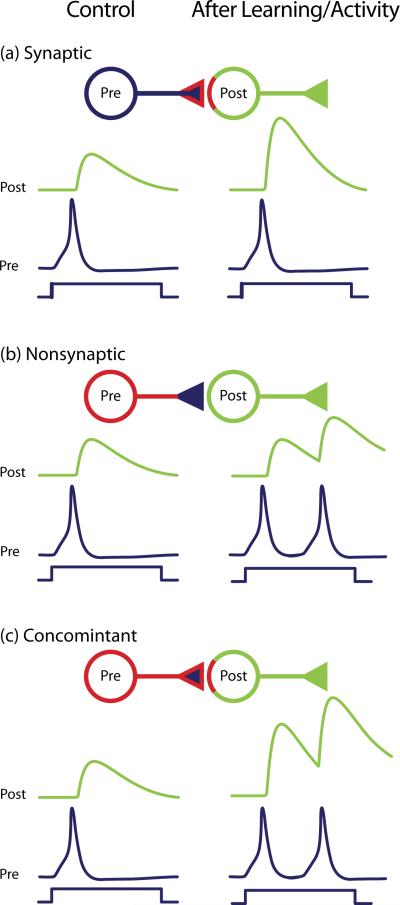Figure 1.
Nonsynaptic and synaptic changes. The interaction between a presynaptic (Pre; blue) and a postsynaptic (Post; green) neuron can be modified by changes in synaptic strength (a), changes in excitability (b), or both (c). (a) When learning or neuronal activity activates a synaptic mechanism (red highlight on the presynaptic terminal and on the postsynaptic neuron), the strength of the synaptic connection is altered (enhanced in this case). (b) When learning or neuronal activity activates a nonsynaptic mechanism (red highlight on soma and neurites of the presynaptic neuron), the excitability is altered (increased, in this case). Consequently, the presynaptic neuron generates a greater number of APs during a fixed time interval. Although the synaptic response to individual APs is not changed, the greater number of evoked spikes produces summating synaptic potential and a resulting greater synaptic response in the postsynaptic neuron. (c) When both synaptic and nonsynaptic mechanisms are triggered by learning or neuronal activity (red highlight on soma, neurites and terminal of the pre- and post-synaptic neurons), each component may work synergistically to change (strengthen, in this case) the synaptic response in the postsynaptic neuron. Note that in this illustration the nonsynaptic change has been embedded arbitrarily in the presynaptic neuron, but it could equally have been embedded in the postsynaptic neuron. Indeed, the “presynaptic” neuron is postsynaptic to some other neuron.

